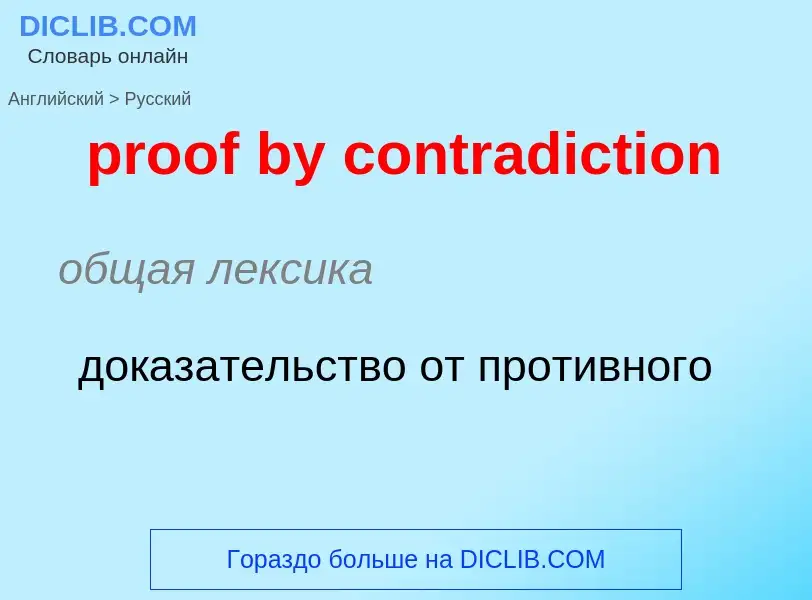Перевод и анализ слов искусственным интеллектом ChatGPT
На этой странице Вы можете получить подробный анализ слова или словосочетания, произведенный с помощью лучшей на сегодняшний день технологии искусственного интеллекта:
- как употребляется слово
- частота употребления
- используется оно чаще в устной или письменной речи
- варианты перевода слова
- примеры употребления (несколько фраз с переводом)
- этимология
by way of proof he mentions - перевод на русский
общая лексика
доказательство от противного
общая лексика
косвенное доказательство
Определение
Википедия
Proof by exhaustion, also known as proof by cases, proof by case analysis, complete induction or the brute force method, is a method of mathematical proof in which the statement to be proved is split into a finite number of cases or sets of equivalent cases, and where each type of case is checked to see if the proposition in question holds. This is a method of direct proof. A proof by exhaustion typically contains two stages:
- A proof that the set of cases is exhaustive; i.e., that each instance of the statement to be proved matches the conditions of (at least) one of the cases.
- A proof of each of the cases.
The prevalence of digital computers has greatly increased the convenience of using the method of exhaustion (e.g., the first computer-assisted proof of four color theorem in 1976), though such approaches can also be challenged on the basis of mathematical elegance. Expert systems can be used to arrive at answers to many of the questions posed to them. In theory, the proof by exhaustion method can be used whenever the number of cases is finite. However, because most mathematical sets are infinite, this method is rarely used to derive general mathematical results.
In the Curry–Howard isomorphism, proof by exhaustion and case analysis are related to ML-style pattern matching.

